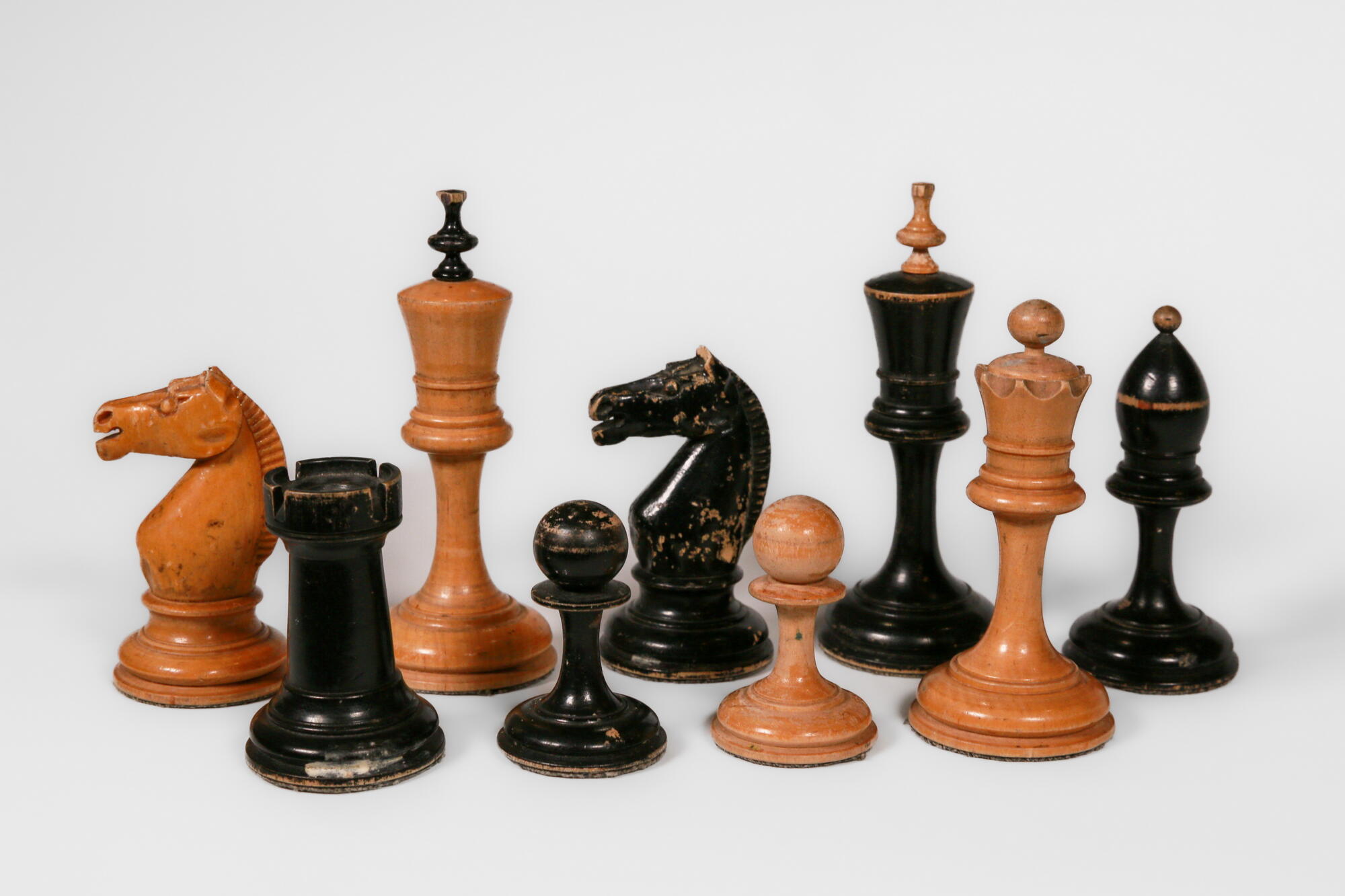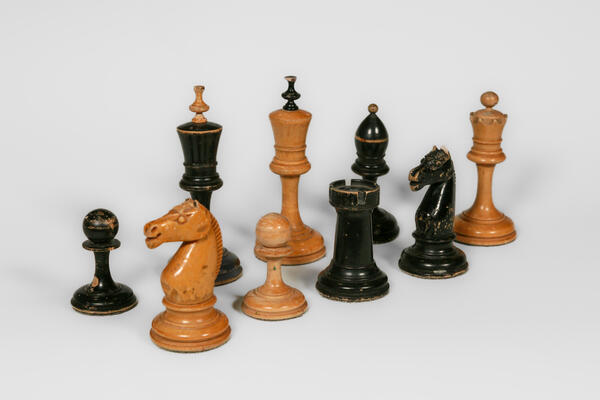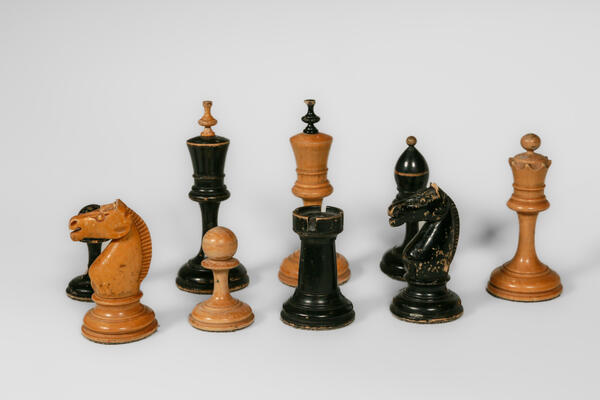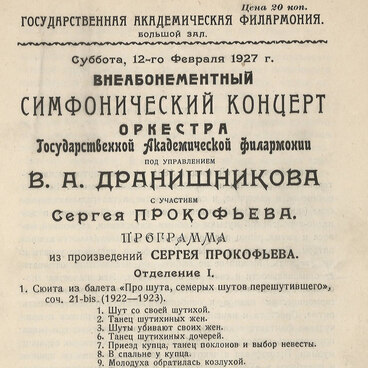Apart from music, Prokofiev’s main passion was chess. He learned to play chess at the age of seven and maintained his love for the game for the rest of his life. He was especially fascinated with his father’s chess set which was beautiful but untouchable for the young boy, “My father had a wonderful Chinese chess set with finely carved ivory pieces. Sometimes, father would take them out of the cotton wool to show them to guests, and I would always ask him to teach me how to play. He would reply, however, that the game too was difficult and unsuitable for me, and that set was not for playing anyway, since the pieces were unstable and falling constantly.”
Chess pieces of Sergei Prokofiev
Время создания
the 1930s
Место создания
Russia
Размер
Height — 10 cm (No. 1520/3); 8.5 cm (No. 1520/4); 8 cm (No. 1520/5); 6.5 cm (No. 1520/6); 5.5 cm (No. 1520/7)
Коллекция
Выставка
0
Открыть в приложении#2
#6
During that period, I was nurturing the idea of transferring chess from a square to a hexagonal board with hexagonal cells. It is a common fact that adjacent hexagons fill the entire area like quadrangles and unlike pentagons or octagons that have gaps between them. However, having drawn a hexagonal board and started applying the moves of various pieces, I came across some unexpected difficulties: for example, the bishop somehow moved similar to a rook, the knight’s move became either too simple or overly complicated, and the pawn’s move was completely confusing… I never quite finished the invention.
Sergei Prokofiev even invented his own variation of chess
#5
Prokofiev maintained his enthusiasm for chess throughout his life. He attended chess clubs in Saint Petersburg and Moscow and often played with his friends, some of these games taking place over the phone or letters.
In 1909, the eighteen-year-old Prokofiev played against the world champion Emanuel Lasker and got a draw, which he was extremely proud of. This game caused quite a sensation among both professionals and amateurs. In 1914, Prokofiev defeated José Raúl Capablanca by setting him a trap with mate in three moves. Several years later, in 1921, Capablanca became world chess champion. Prokofiev also often played with musicians, including Glière and Goldenweiser. The most famous chess game between musicians took place in 1937 at the Central Art Workers’ Club. The violinist David Oistrakh outclassed Prokofiev in a 4-3 win. According to their agreement, the loser had to play a concert at the club.
In 1909, the eighteen-year-old Prokofiev played against the world champion Emanuel Lasker and got a draw, which he was extremely proud of. This game caused quite a sensation among both professionals and amateurs. In 1914, Prokofiev defeated José Raúl Capablanca by setting him a trap with mate in three moves. Several years later, in 1921, Capablanca became world chess champion. Prokofiev also often played with musicians, including Glière and Goldenweiser. The most famous chess game between musicians took place in 1937 at the Central Art Workers’ Club. The violinist David Oistrakh outclassed Prokofiev in a 4-3 win. According to their agreement, the loser had to play a concert at the club.
#7
1 / 7
Chess pieces of Sergei Prokofiev
#3
Ministry of Culture of the Russian Federation
читать дальшескрыть
00:00
00:00
1x
Chess pieces of Sergei Prokofiev
Время создания
the 1930s
Место создания
Russia
Размер
Height — 10 cm (No. 1520/3); 8.5 cm (No. 1520/4); 8 cm (No. 1520/5); 6.5 cm (No. 1520/6); 5.5 cm (No. 1520/7)
Коллекция
Выставка
0
Открыть в приложении
Поделиться






